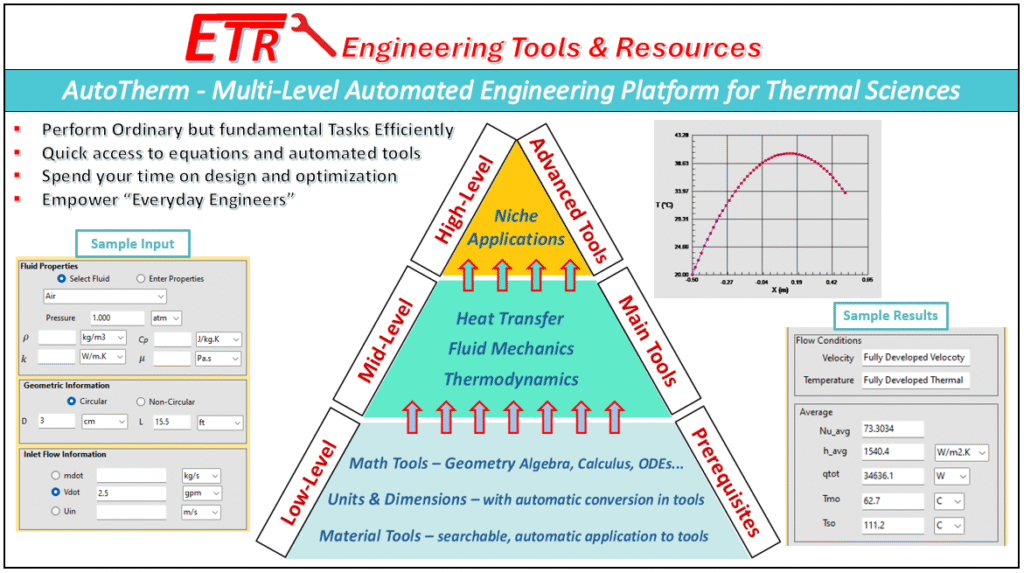
AutoTherm Desktop is an interactive and fully automated environment that is designed to provide a highly organized workspace for Mechanical Engineers with access to a variety of tools and resources.
The platform is constructed using a “pyramid” approach, with a generic (prerequisite) engine at the lowest, fundamental heat transfer, fluid mechanics, and thermodynamics at the main level, and specific advanced tools at the top. This hierarchical approach is captured in the top menu of AutoTherm, utilizing a left/right and top/down menu structure.
1. Low Level:
Used independently AND combined (to support the functionality of the Main-Level Tools).
Units:
- Independently: instant display of equivalents.
- Combined: Called by various solvers as needed to automatically convert values from “User Units” to SI for various computations.
Math:
- Independently: Various panels for common math calculations (shape area/volume, solution of systems, ODEs, best-fits…).
- Combined: Called by various solvers to perform background mathematical operations.
Materials:
Independently: Expandable tables of material properties with search tools.
- Combined: Automatic application of temperature-dependent properties from the materials list in tools.
2. Main Level:
These represent different chapters in thermal sciences textbooks. The tools provide an automated interactive panel for problem-solving using the most accurate equations/correlations for the intended range of parameters. The resources resemble “lecture notes” presenting the material with equations and a range of applicability.
Heat Transfer:
- Tools: Automated tools to solve heat transfer problems using the best applicable and most accurate equations.
- Resources: These represent lecture notes for various chapters and sections. All relevant equations are listed with their range of applicability.
Fluid Mechanics:
- Tools: Automated tools to solve fluid mechanics problems using the best applicable and most accurate equations.
- Resources: These represent lecture notes for various chapters and sections. All relevant equations are listed with their range of applicability.
Thermodynamics:
- Tools: Automated tools to solve thermodynamics problems using the best applicable and most accurate equations.
- Resources: These represent lecture notes for various chapters and sections. All relevant equations are listed with their range of applicability.
3. Advanced Level:
These combine fundamental tools (main-level tools) in their engines for the solution of specific classes of applications, which include (but are not limited to) applications such as “thermal management of electronics”, “heat transfer in enclosures”, and “cold-plates with cooling channels”.